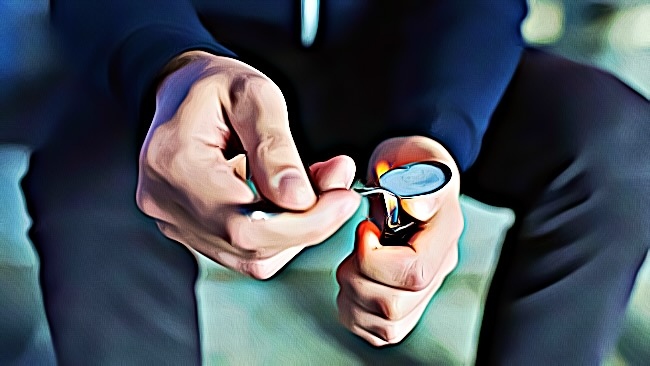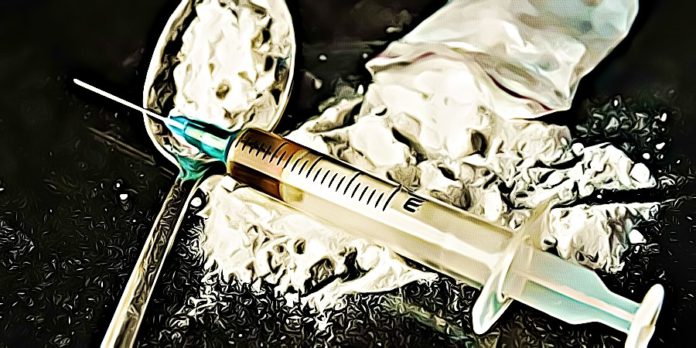Among the different street drugs and illegal substances that have come to light in recent years, none have caused a more widespread, challenging, and frightening crisis than heroin.
While certain substances like crack cocaine, valium, and ketamine have become increasingly prevalent in vulnerable sectors, none of them have matched heroin in terms of the severity of its impact. Affecting people of all ages, financial classes, and educational backgrounds, heroin is non-discriminatory in terms of who it victimizes and has undoubtedly made itself a threat to watch out for.
If you or someone you know is struggling with a heroin addiction, then it’s vital that you understand the situation at hand and seek the necessary solutions to combat it. Unfortunately, being in the midst of heroin addiction often means that individuals have an incredibly difficult time living productive and healthy lives.
Beyond taking over one’s health and personal life, the effects of heroin addiction lead to difficulties in finding or keeping a job. This is because more employers are testing applicants and employees for heroin. The problem is even worsened by the stigma surrounding heroin itself and its ever-present link to issues like employee delinquency, underperformance, and theft.
If you or a loved one are struggling with an addiction to heroin but striving to live a normal life, having a job can make a monumental difference in terms of recovery and control. However, achieving this kind of progress can be difficult because of mandated drug tests that are carried out.
This also brings up another question: How long does heroin stay in your system?
What Is Heroin?
To best understand the presence of heroin in the body and how long it can stay there, we must first understand the opioid before all else.
Heroin is technically and chemically defined as an opiate drug that is derived from morphine through an intricate chemical process that seeks to extract it into a “pure”, consumable form. This drug is not legally available by prescription in the United States because of the issues and concerns surrounding a growing addiction epidemic.
Today, many consider heroin as one of the most dangerous illegal substances in the country. Using it bears a high risk of overdose as well as dangerous interactions with other drugs and prescribed medications. This is precisely why it’s vital to understand how long it is active in one’s system to best understand the risks and variables involved in taking the opioid.
Based on the current standards of the U.S Drug Enforcement Agency (DEA), dope—as it’s alternatively called—is classified as a Schedule I drug. This particular classification signifies that heroin is a drug with no currently accepted medical use and a high potential for misuse.
How Long Does Heroin Stay In Your System? (Blood, Urine, Saliva, etc.)
When it comes to understanding the precise duration of the presence of heroin in the human body, there are various factors to be mindful of coming up with the “magic figure.”
The one thing that you should know is that it’s immensely fast-acting and has a much shorter half-life than other opiates and illegal substances. Over the years, drug testing bodies have experienced difficulties pinpointing the presence of heroin in the systems of subjects because it can be difficult to detect in standard drug screenings.
Based on the current body of knowledge surrounding heroin, the drug has an extremely rapid half-life of two to six minutes. It is metabolized into 6-acetyl morphine and morphine soon after intake. The half-life of this morphine metabolite is one and a half to seven hours, while the measurement for 6-acetyl morphine averages between six to 25 minutes. Given these numbers, it takes four to five half-lives for the drug to be effectively eliminated from the human body.
In terms of the duration of the high that users experience, the effects of the drug last for about 30 minutes and come instantly because both heroin and 6-acetyl morphine quickly enter the brain. This quick high also translates to a relatively short detection period for a dose of “smack” which lasts anywhere between one to four days—depending on the testing method.
To give you a better idea of the detectability of heroin in the human body, here’s a quick rundown of the current numbers concerning all applicable tests:
Urine Tests
There are several different kinds of tests used to detect the presence of heroin in the human body, and urine tests are by far the most frequently used because of their price, availability, and quick turnaround times. In a standard version of this test, the presence of heroin can be detected between one to four days after the last use of a person being tested.
Blood Tests
According to research, the figures concerning heroin detection in 6-AM assay tests make it a dependable method to use because of its ability to detect heroin metabolites in blood samples. However, this method is much more applicable for frequent users as it can only detect the presence of the drug in question for up to six hours.
Saliva Tests
Studies and research have shown that high levels of the heroin metabolite 6-acetyl morphine can be detected in saliva samples. Commonly used in situations involving traffic accidents, saliva tests for heroin can detect the presence of the drug for up to 24 hours after last use.

Common Side Effects Of Heroin
Generally, the effects of heroin abuse differentiate depending on a user’s physiology, frequency of use, length of abuse, amount of heroin used, and presence of other substances. The below-mentioned symptoms tend to worsen the longer the drug is abused because of the compounding effect that the substance’s compounds have.
Here are some of the most common side-effects of heroin addiction:
- Liver disease
- Skin disease and abscesses around injection sites
- Infections of the valves and lining of the heart
- HIV
- Hepatitis B and C
- Chronic pneumonia
- Clouded mental functioning
- Collapsed, scarred veins
- Blood clots, leading to stroke, pulmonary embolism, and heart attack
- Kidney disease
- Risks of contracting chronic illnesses
- Risks for blood-borne pathogens
- Septicemia
- Respiratory depression
- Seizures
- Overdose
- Death
Withdrawal Symptoms
Whenever someone experiences acute heroin withdrawal, they can experience various flu-like symptoms that can worsen depending on the degree of dependency or abuse before a sudden stop.
Lasting anywhere between six hours to an entire week after the last dose, an addict or user can experience the following symptoms once they withdraw from regular use:
- Nausea
- Vomiting
- Cold sweats
- Body aches
- Diarrhea
- Runny nose
- Tremors
- Insomnia
- Fatigue
- Anxiety
- Drug cravings
- Agitation
Signs Of Use Or Abuse
Whenever someone abuses or uses heroin, there are various signs that one must watch out for to take preventive or immediate action for the highest chances of recovery:
- Blood-shot eyes
- Sudden weight loss
- Secretive behavior
- Changes in appearance
- Constricted “pinpoint” pupils
- Lack of motivation
- Financial problems (which are uncharacteristic to the person’s previous history)
- Extreme drowsiness
If you recognize any of these signs in yourself or a loved one, it’s crucial to seek treatment with the help of a professional rehabilitation center, such as those in your area that are partnered with Addiction.IO.
Conclusion
Heroin abuse, as daunting as it may seem, must be dealt with systematically with great compassion and care for those suffering from it. By being more mindful of the key points mentioned above, you’ll be able to understand the way the body interacts with the drug so that you can help you or a loved one recover better.
















